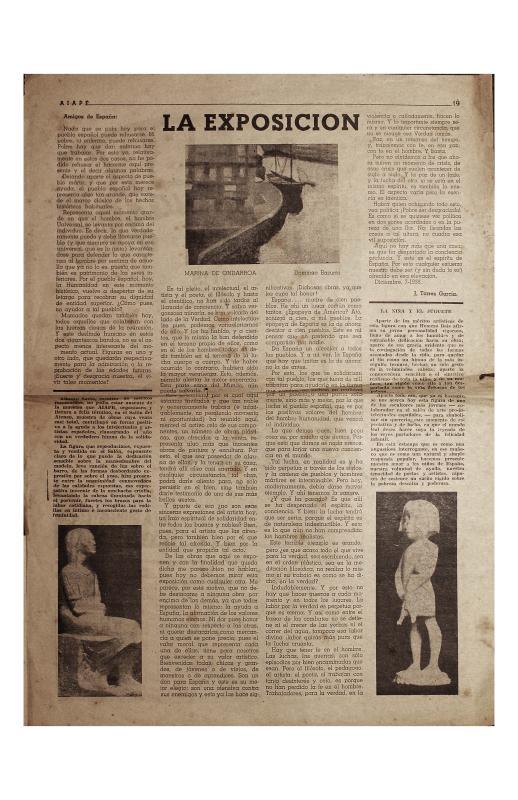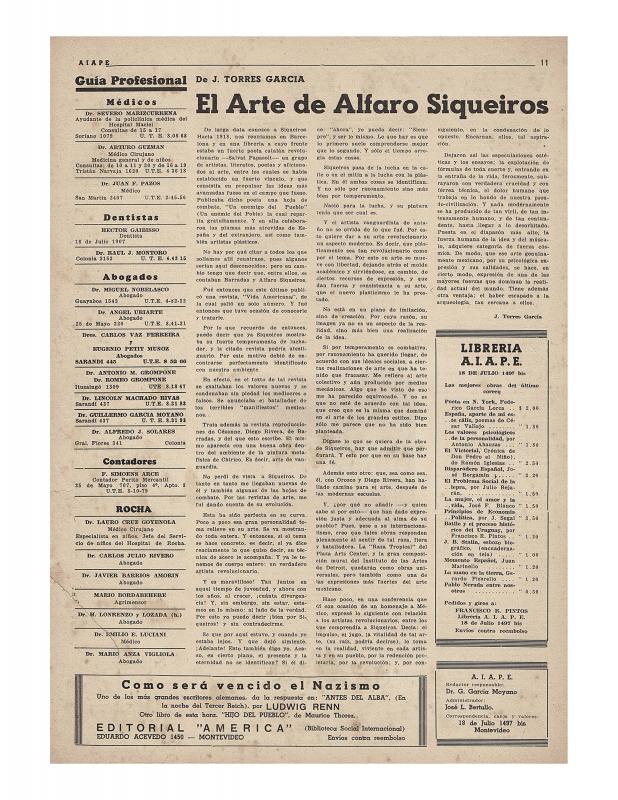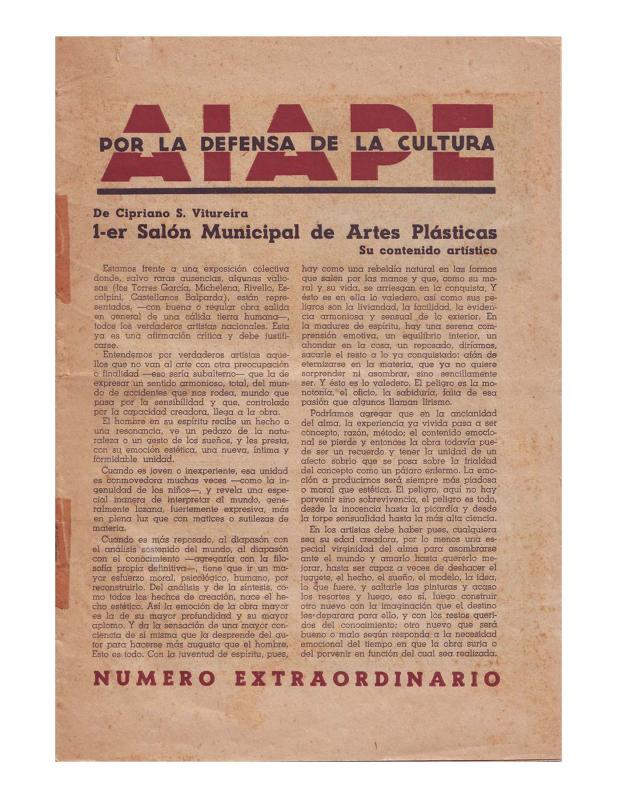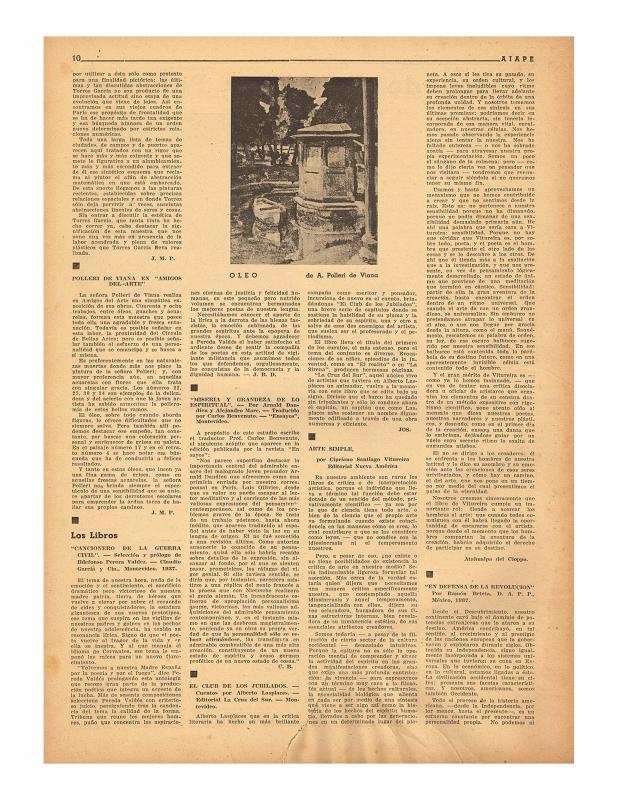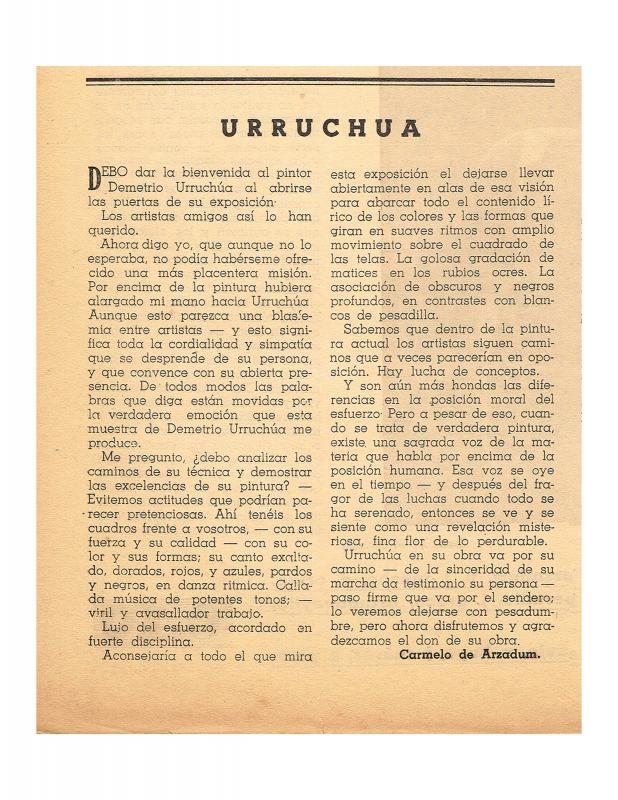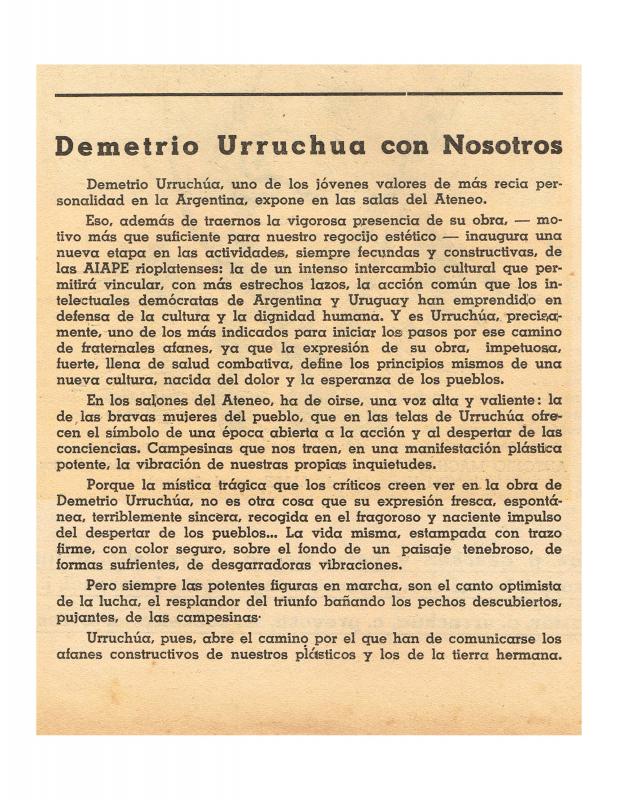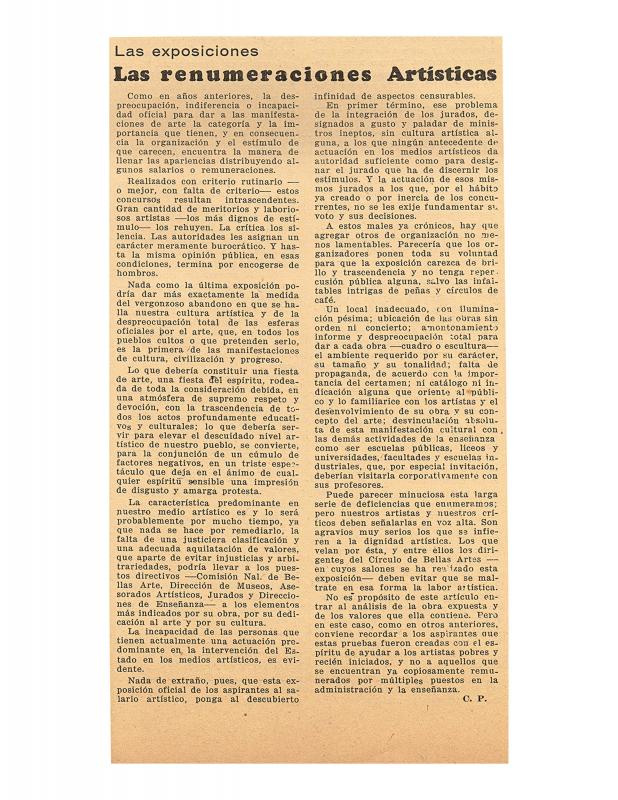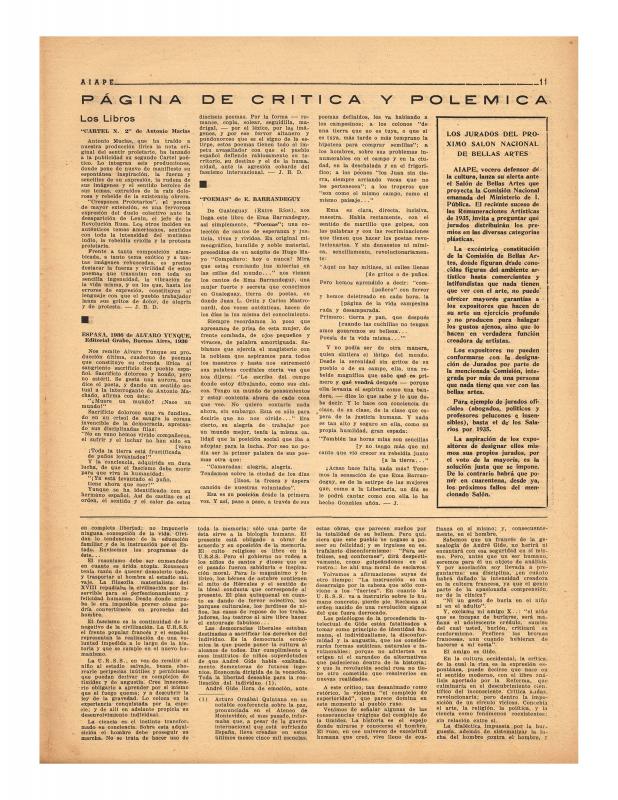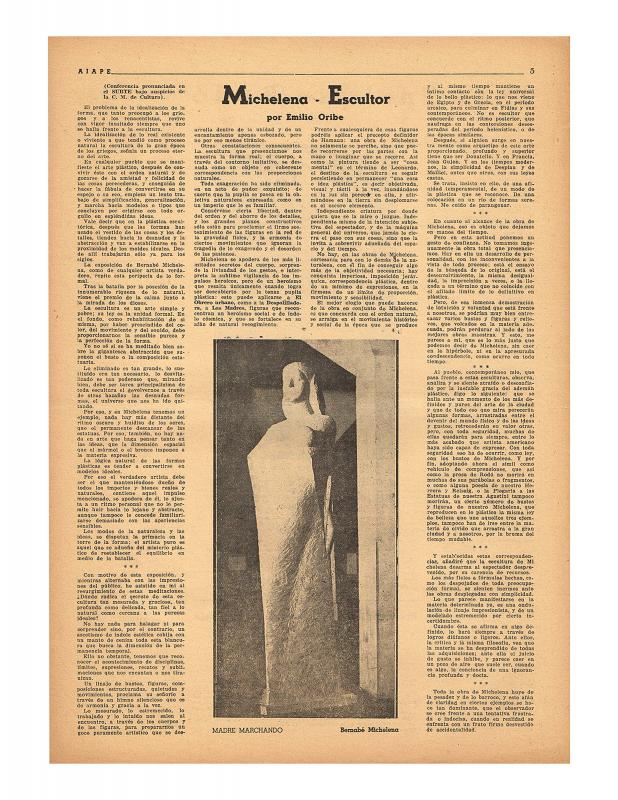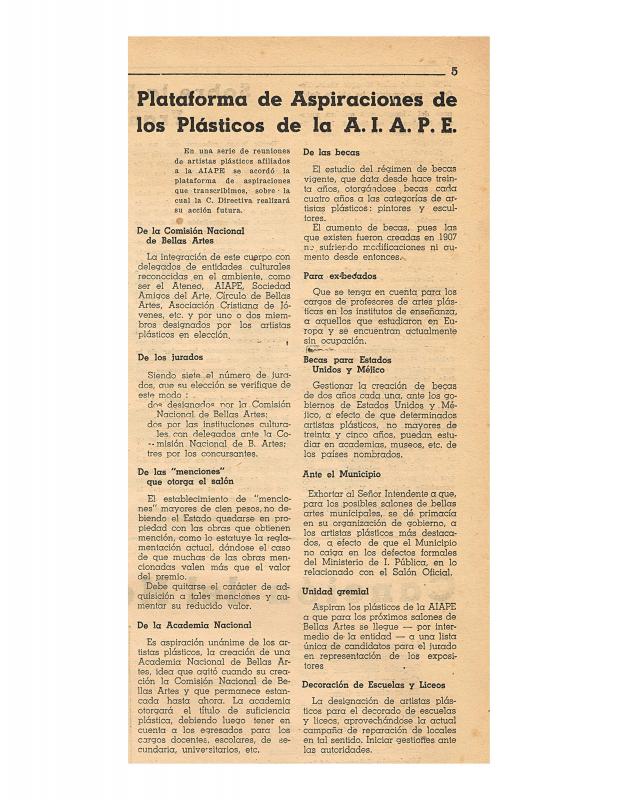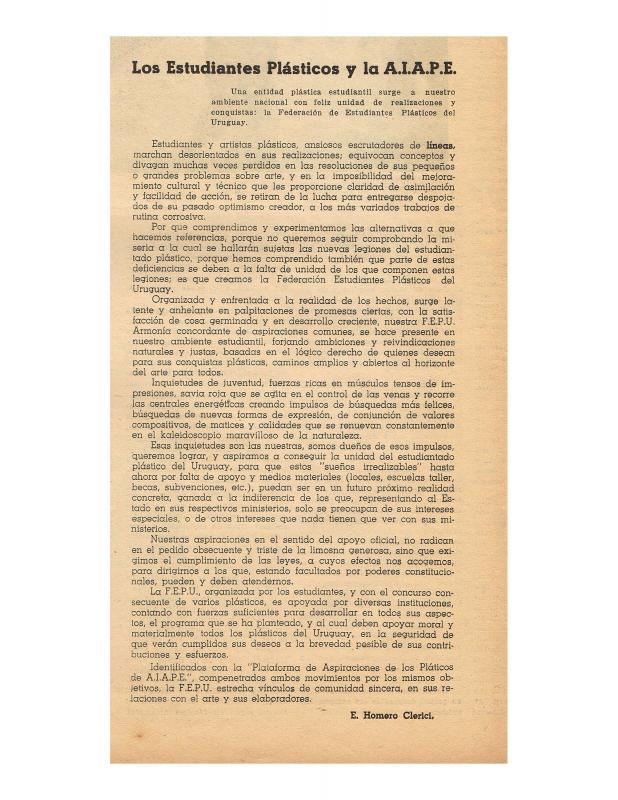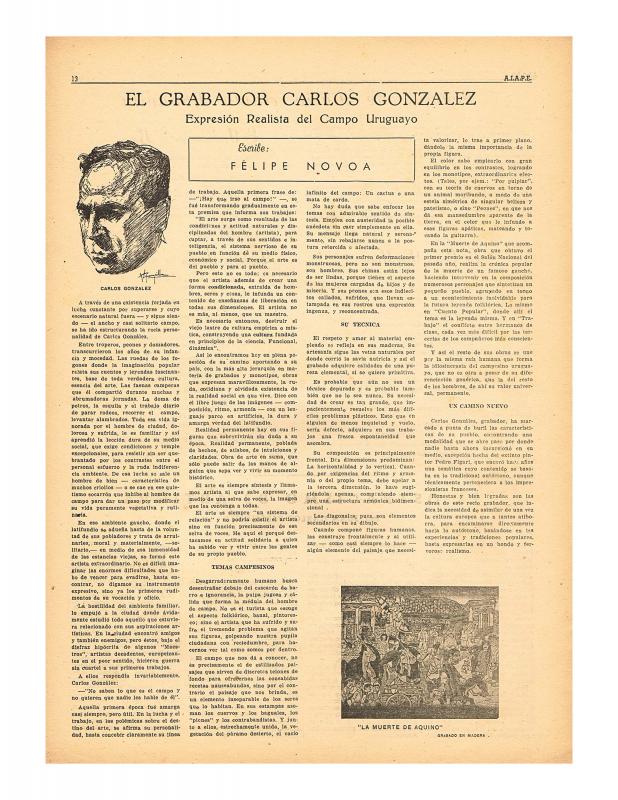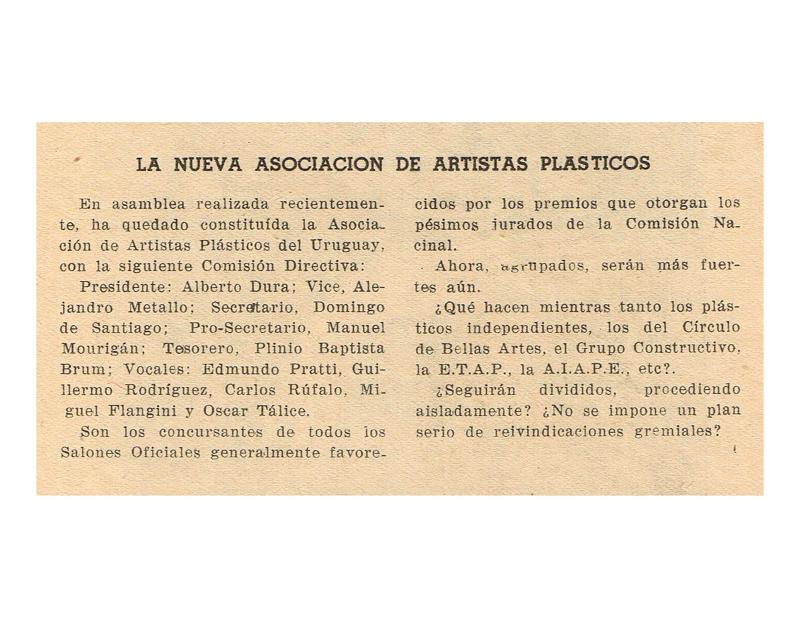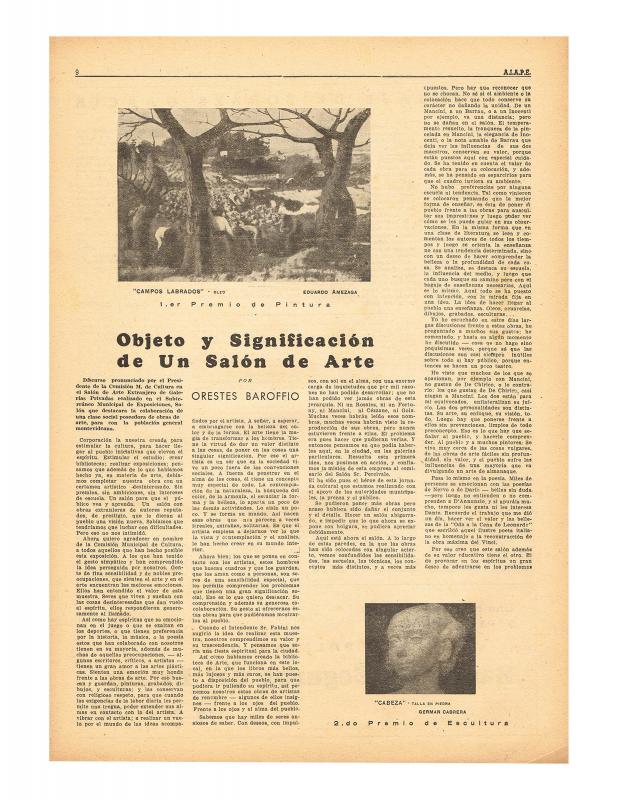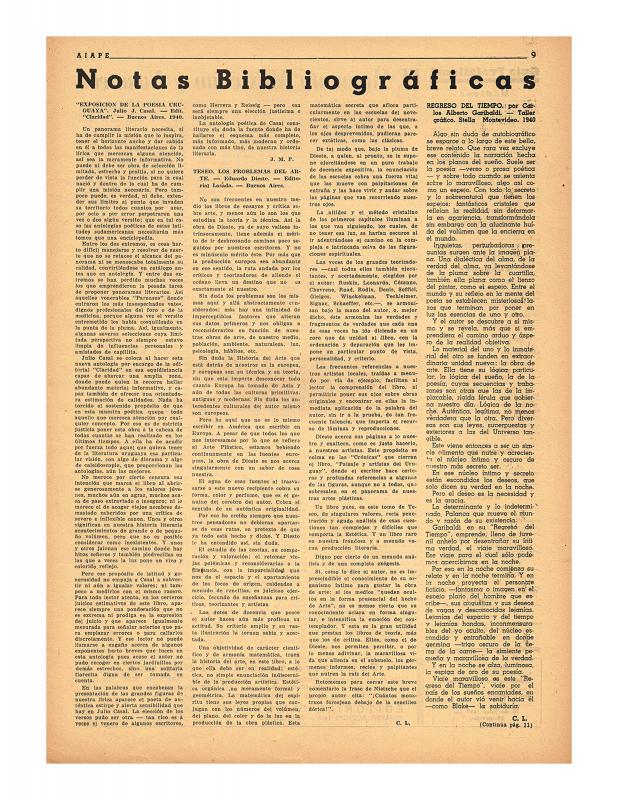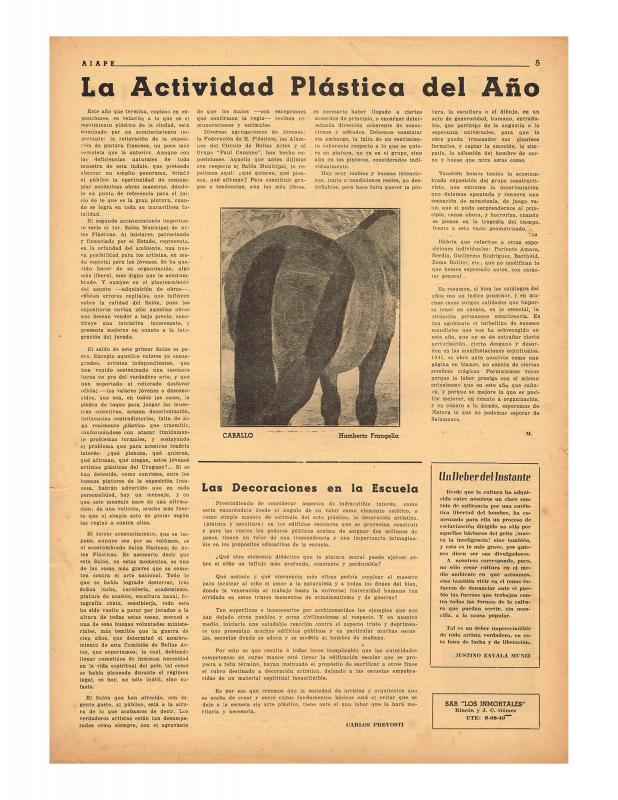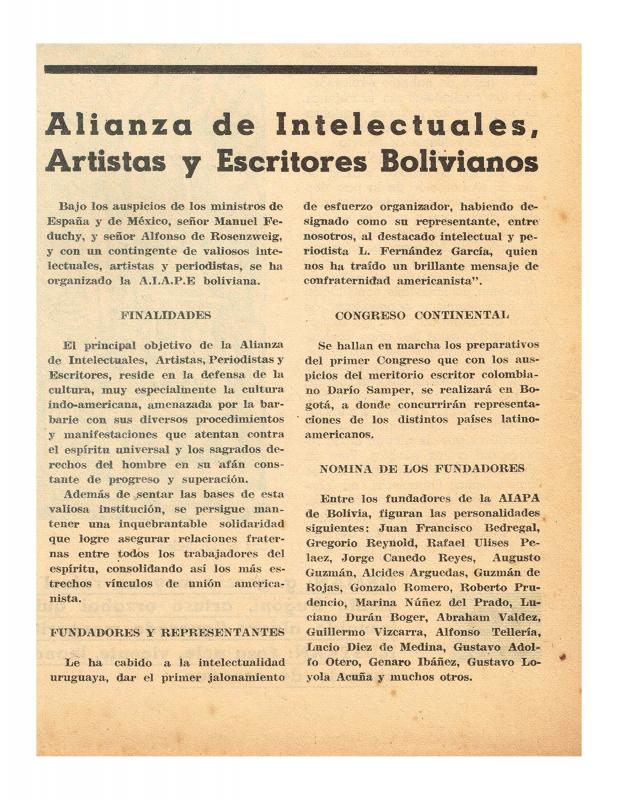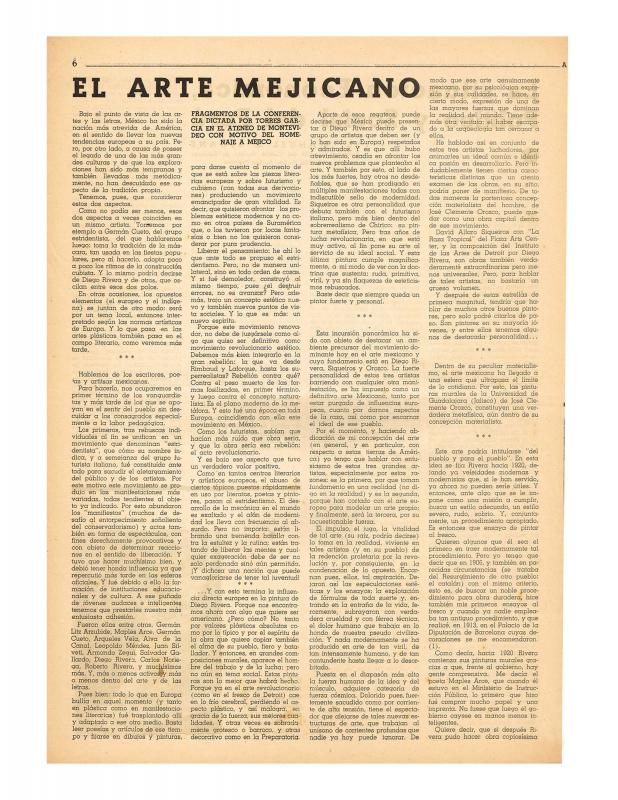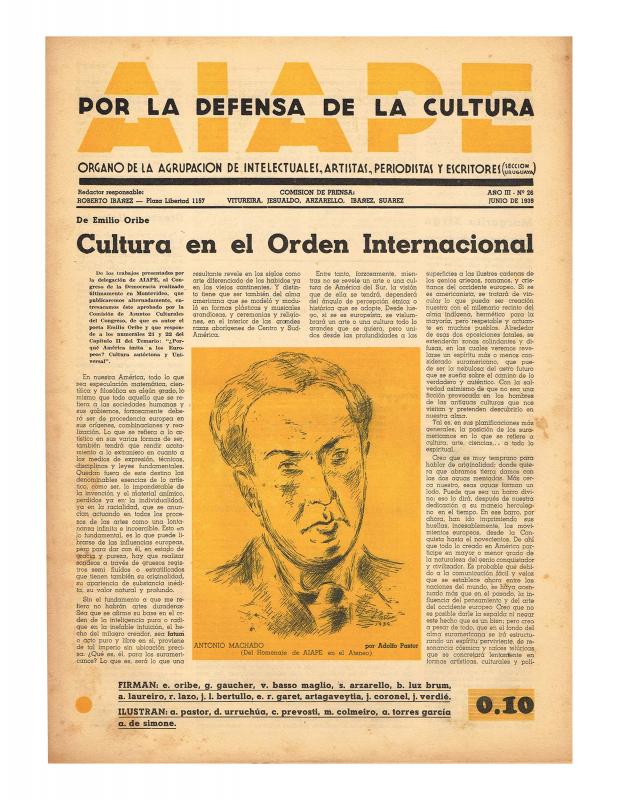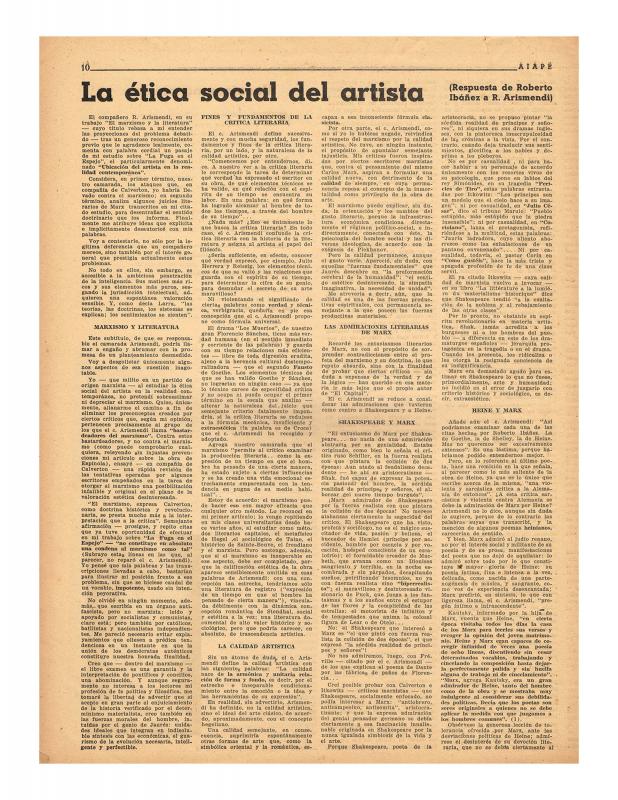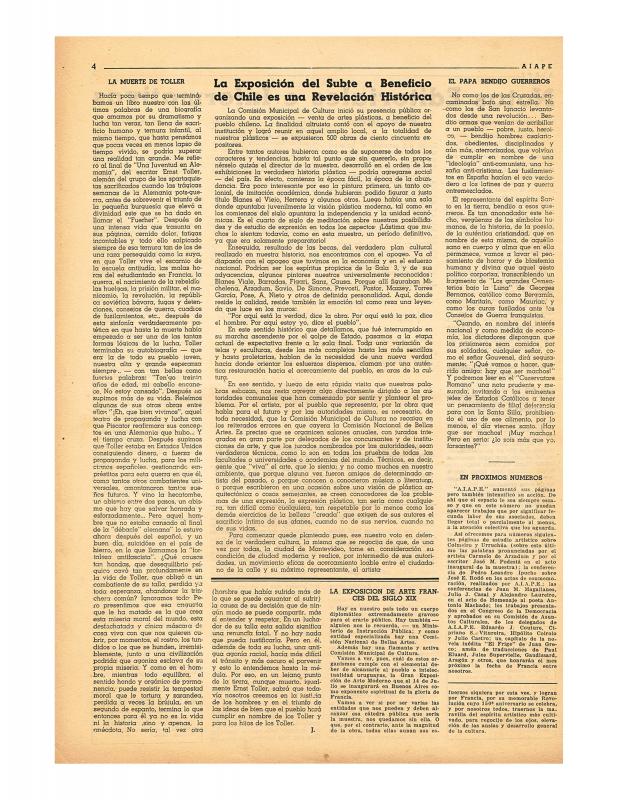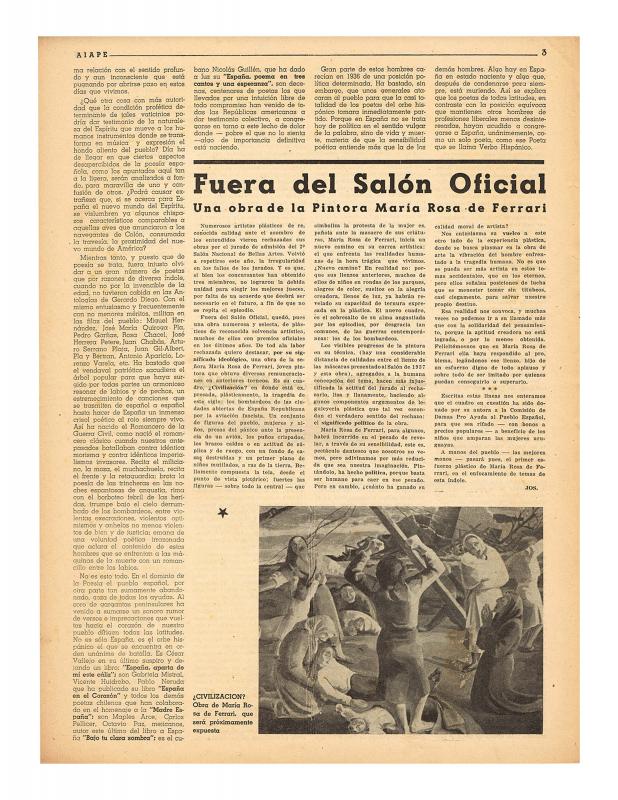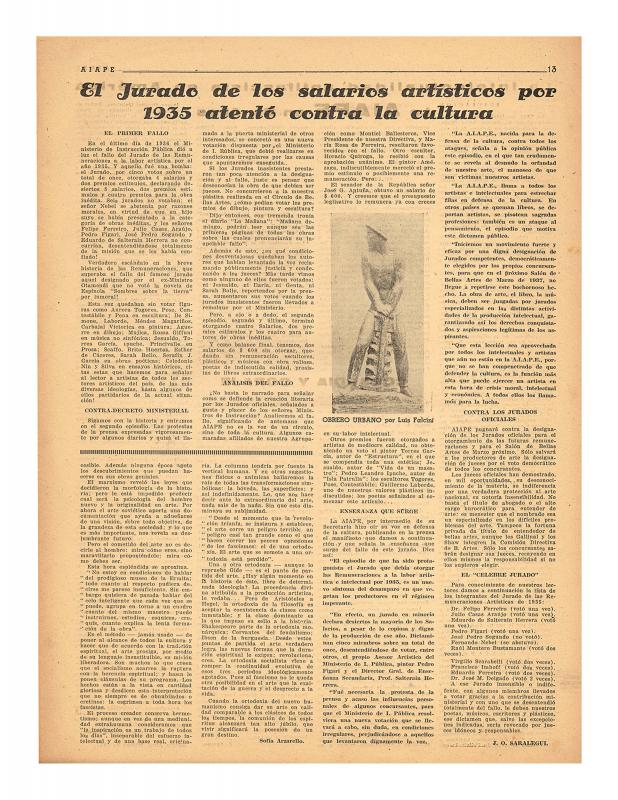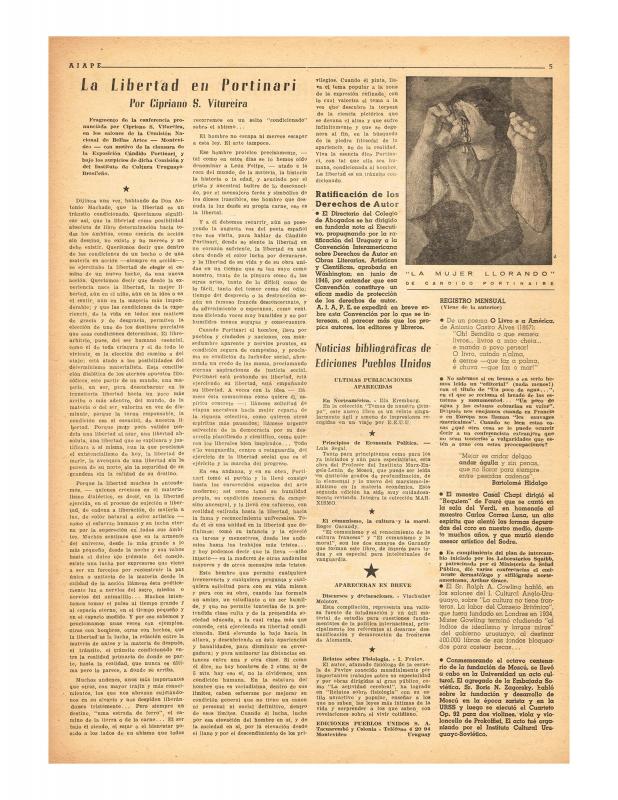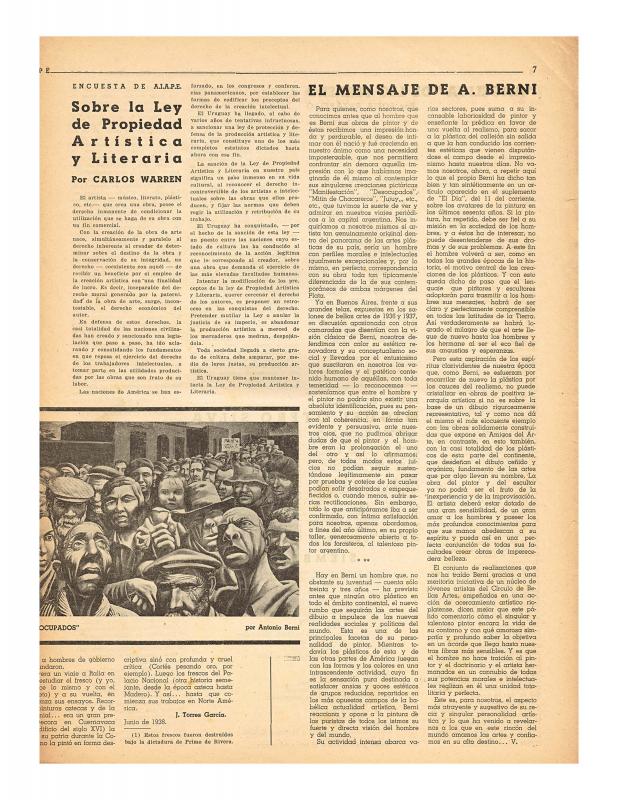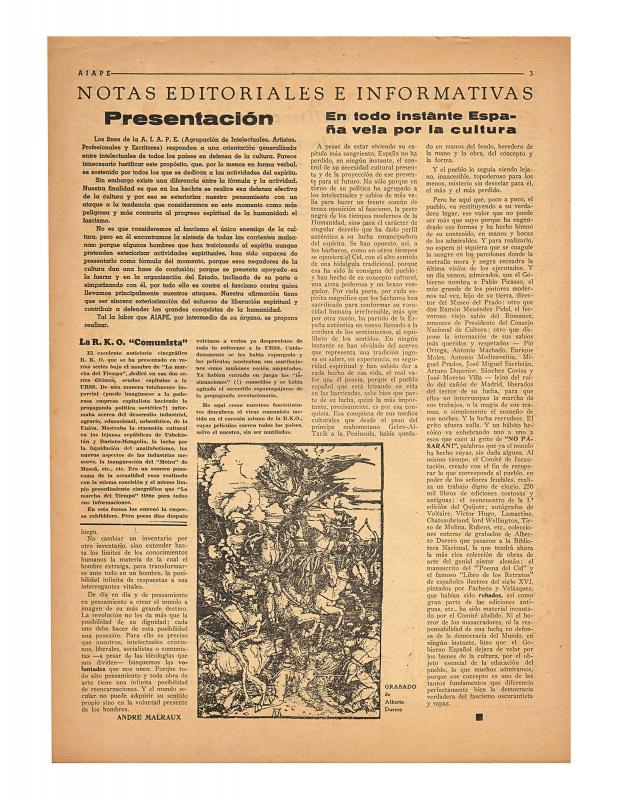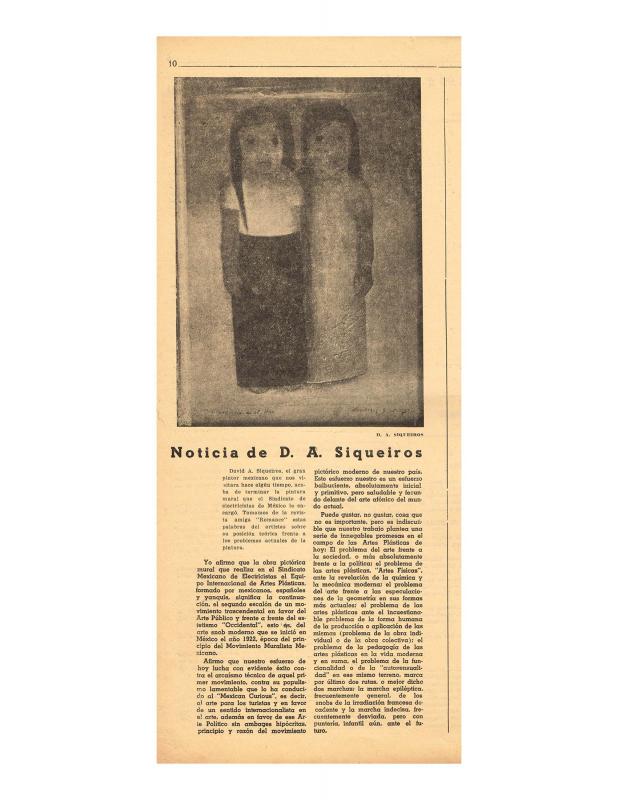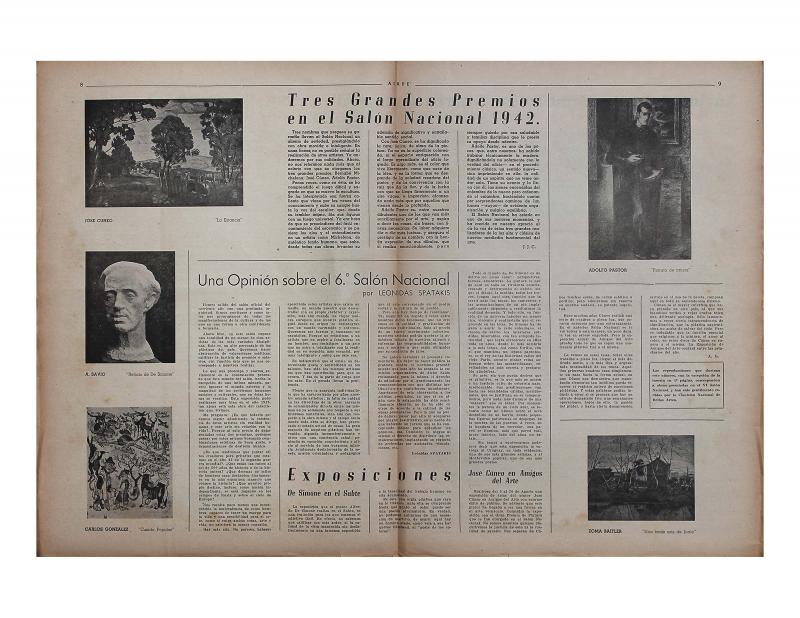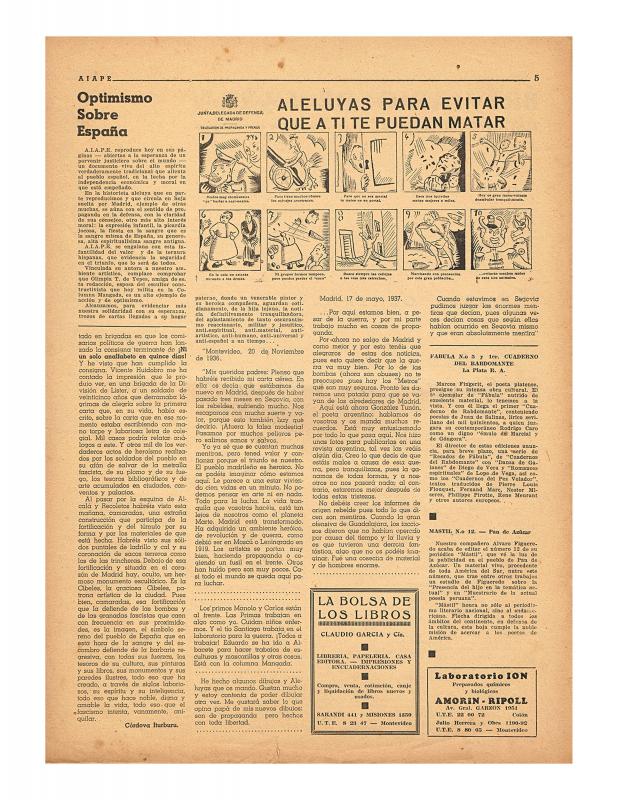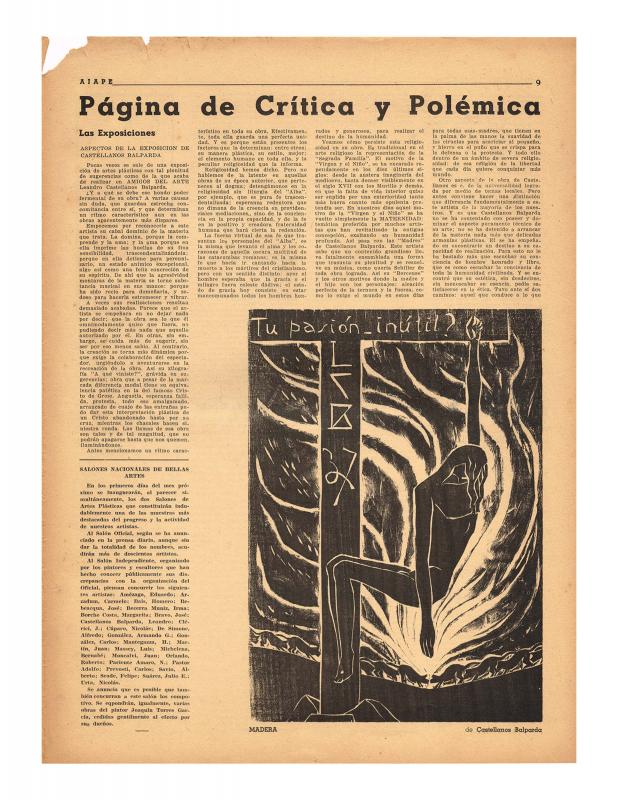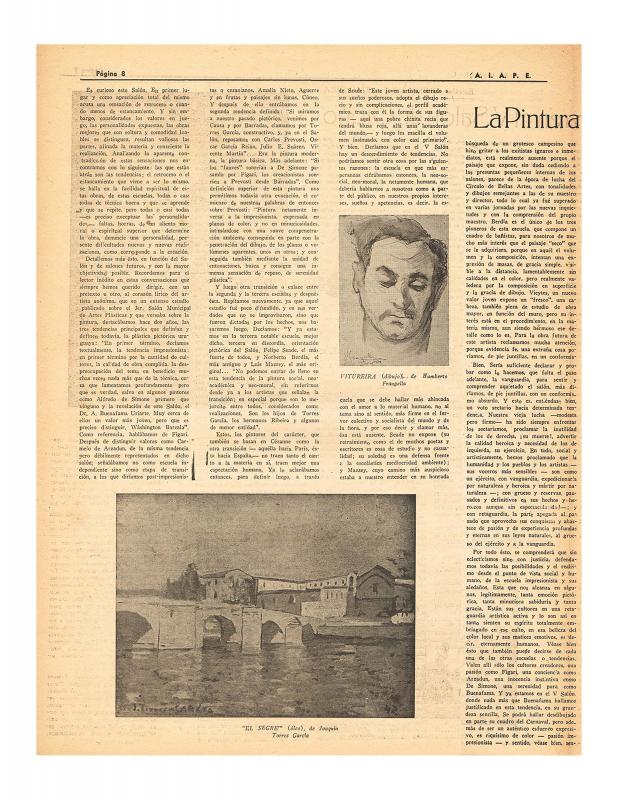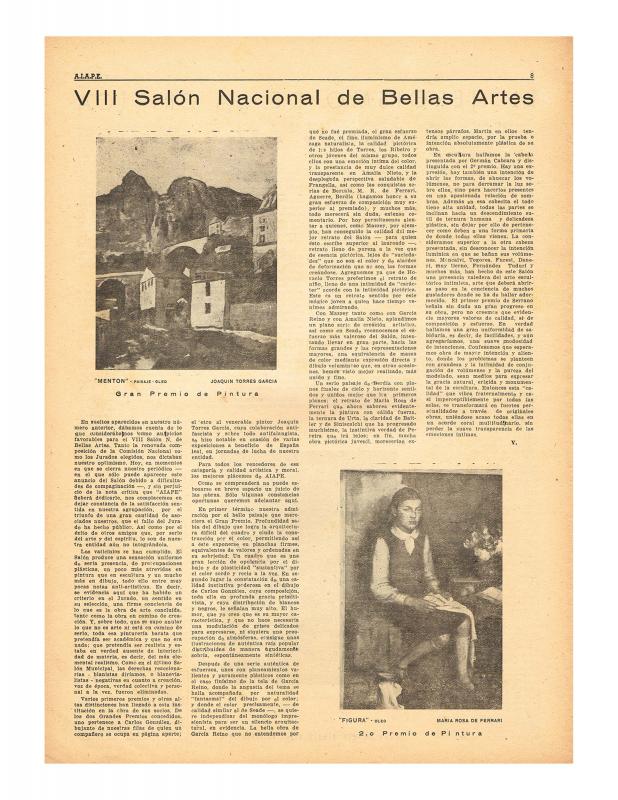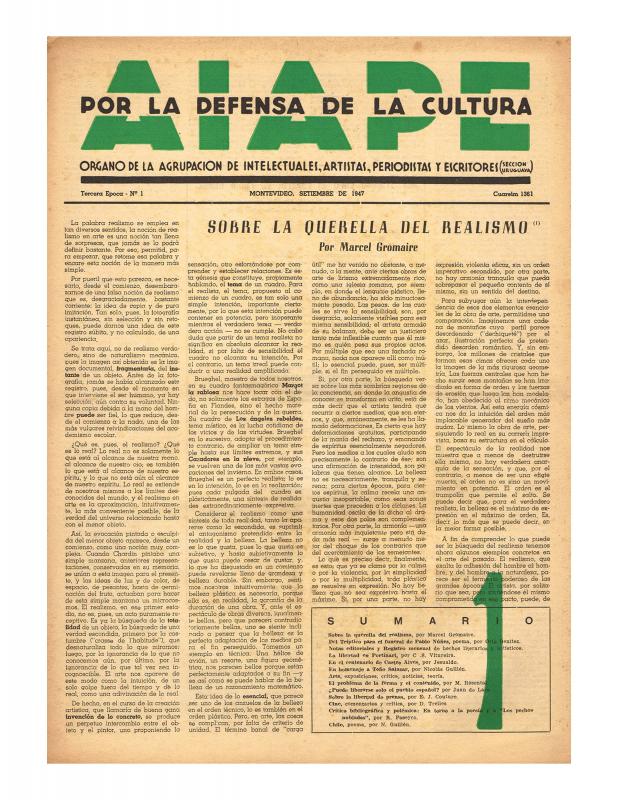The title of this document clearly conveys its main objective, which is to challenge the recently created Comisión de Bellas Artes (1936) and the jury selection for the forthcoming Salón Nacional de Artes Plásticas, all of which falls within the purview of the Minister for Public Education Eduardo Víctor Haedo. The subject of institutional controls over the selection of juries for national salons has prompted long-standing concern among artists as regards their fitness for the task and their independence from the country’s halls of political power. This article casts some light on what was going on at the time, such as the growing disappointment with the so-called “Welfare State” in Uruguay in the 1920s, and the international mood of instability that encouraged a critical, combative relationship with the authoritarian local government. These circumstances fanned the flames of discontent and the increasing demands from many sectors of society as well as visual artists.
[As complementary reading see, in the ICAA digital archive, the following articles published in AIAPE: by Joaquín Torres García, “La exposición. [Amigos de España]” (doc. no. 1191197), “El Arte de Arzádum” (doc. no. 1223148), and “El arte de David Alfaro Siqueiros” (doc. no. 1238628); by Cipriano S. Vitureira, “1er Salón Municipal de Artes Plásticas/Su contenido artístico” (doc. no. 1184568), and “La pintura de Miguel Ángel Pareja” (doc. no. 1223795).
See also the following articles: by Justino Zavala Muniz, “El artista y el Estado” (doc. no. 1216580); “Arte simple,” by Atahualpa del Cioppo (doc. no. 1223119); by Carmelo de Arzadum, “Las artes plásticas de 1936 a 1939” (doc. no. 1224706), and “Urruchúa (doc. no. 1224405); by Roberto Ibáñez (editor in chief), “Demetrio Urruchúa con Nosotros” (doc. no. 1223661), “Las exposiciones. Las remuneraciones artísticas” (doc. no. 1225449), “Los jurados del próximo Salón Nacional de Bellas Artes” (doc. no. 1225548), “Michelena- Escultor” (doc. no. 1223386), and “Plataforma de aspiraciones de los plásticos de la A.I.A.P.E.” (doc. no. 1225398); by Homero Clerici, “Los estudiantes plásticos y la AIAPE [Agrupación de Intelectuales, Artistas, Periodistas, y Escritores]” (doc. no. 1225286); by Felipe Novoa “El grabador Carlos González” (doc. no. 1223870); by Gisleno Aguirre, “La nueva Asociación de Artistas Plásticos” (doc. no. 1225166); by Orestes Baroffio, “Objeto y Significación de Un Salón de Arte” (doc. no. 1210990); and by C.L., “Teseo: los problemas del arte” (doc. no. 1223765).
There are also many anonymous articles that were published in AIAPE: “Temas de discusión sobre la cultura Americana” (doc. no. 1225812) “La actividad plástica del año” (doc. no. 1223617); “Alianza de intelectuales, artistas y escritores bolivianos” (doc. no. 1225763); “El arte mejicano” (doc. no. 1225519); “Bases A.I.A.P.E (Agrupación de Intelectuales, Artistas, Periodistas y Escritores)” (doc. no. 1226697); “Cae decorado de Berni bajo la piqueta del G.O.U” (doc. no. 1225213); “Cultura de liberación” (doc. no. 1226424); “Cultura en el orden internacional” (doc. no. 1223996); “La ética social del artista,” unformatted (doc. no. 1223962); “La exposición del Subte a beneficio de Chile,” unformatted (doc. no. 1225245); “Fuera del Salón Oficial” (doc. no. 1221528); “Los jurados de los salarios artísticos de 1935 atentó contra la cultura” (doc. no. 1225596); “La libertad en Portinari” (doc. no. 1225346); “El mensaje de Antonio Berni” (doc. no. 1223596); “Notas editoriales e informativas” (doc. no. 1226398); “Noticia de David Alfaro Siqueiros” (doc. no. 1223640); “Una opinión sobre el 6° Salón Nacional” (doc. no. 1225722); “Optimismo sobre España” (doc. no. 1225185); “Página de crítica y polémica. Las exposiciones” (doc. no. 1221503); “La pintura en el V Salón de Otoño” (doc. no. 1225672); “Reconocimiento a Élie Faure” (doc. no. 1223458); “VIII Salón Nacional de Bellas Artes” (doc. no. 1211227); and “Sobre la querella del realismo” (doc. no. 1225636)].

